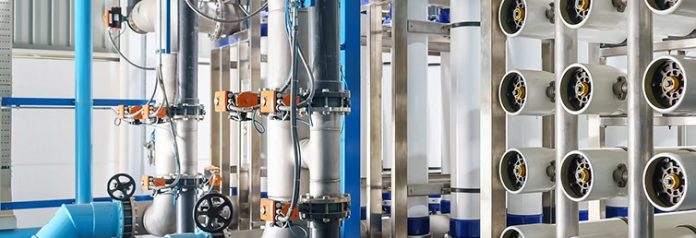Chris Payne, co-founder & director of PureTec Separations Ltd, examines the realistic challenges and compelling opportunities of sustainable wastewater treatment, and why the paradigm shift from disposal to asset creation is reshaping industry economics.
The conversation around sustainable wastewater treatment has evolved beyond environmental compliance into strategic asset management. With industries facing tightening regulations, rising operational costs, and growing water scarcity concerns, the traditional view of wastewater as a disposal problem is giving way to recognition of its potential as a valuable business asset. Yet this transformation isn’t without its challenges.
For water industry professionals evaluating sustainable treatment options, understanding both obstacles and opportunities is crucial for making informed investment decisions that deliver long-term value.
The reality of implementation challenges
The path to sustainable wastewater treatment presents several significant hurdles that organisations must navigate carefully. The most immediate challenge is capital investment. Advanced treatment technologies require substantial upfront expenditure, with systems often demanding infrastructure upgrades beyond simple equipment replacement.
Energy consumption represents another critical consideration. Energy represents one of the largest operational costs for wastewater treatment facilities, with rising prices significantly impacting operational expenses. Whilst sustainable technologies can reduce long-term energy usage, some advanced membrane systems initially require significant power input during optimisation.
Technical complexity cannot be understated. Modern sustainable treatment systems integrate multiple technologies including membrane filtration, biological processes, and real-time monitoring. This requires skilled operators and sophisticated maintenance protocols, with steep learning curves for facilities transitioning from conventional approaches.
Perhaps most challenging is the business case development timeline. Unlike straightforward equipment purchases, sustainable wastewater treatment investments require comprehensive lifecycle analysis and detailed performance modelling. Tender processes often extend significantly as organisations need concrete data on water recovery rates, energy savings, and compliance improvements before committing to major investments.
Existing asset longevity also creates implementation barriers. Many facilities operate ageing but functional treatment systems that still meet basic discharge requirements. Building a compelling case for upgrading equipment that “still works” requires demonstrating clear operational and financial advantages beyond regulatory compliance.
The compelling economics of asset transformation
Despite these challenges, the benefits of sustainable wastewater treatment are proving increasingly compelling, particularly when viewed through the lens of asset creation rather than cost management. The fundamental shift lies in recognising that properly treated wastewater becomes a valuable resource rather than a waste product requiring disposal.
Water recovery and reuse capabilities deliver immediate operational benefits. Advanced treatment systems can achieve water recovery rates of 80-95%, dramatically reducing freshwater demand and associated costs. For water-intensive industries, this translates to significant operational savings and enhanced resilience against supply disruptions or pricing volatility.
We exemplify this approach through integration of operational intelligence and sustainable treatment design. By combining UK-manufactured membrane technologies with predictive analytics and SCADA integration, facilities can move from reactive maintenance to proactive optimisation.
Energy optimisation presents substantial opportunities. Whilst initial consumption may be higher, integrated sustainable systems often incorporate energy recovery mechanisms and optimised process control that can reduce overall energy consumption by 20-30% compared to conventional treatment. Smart automation further enhances efficiency by optimising treatment cycles based on operational demands.
Sustainable treatment systems typically exceed current discharge standards, providing buffer against future regulatory tightening whilst avoiding compliance risks and potential penalties. This future-proofing element proves particularly valuable as environmental standards evolve.
Beyond cost savings: strategic asset creation
The most significant transformation occurs when organisations begin viewing wastewater treatment as asset creation. Rather than paying for wastewater disposal services, businesses can eliminate this recurring cost whilst simultaneously creating a valuable resource. Treated water becomes a controlled, predictable asset that can support business growth and reduce external dependencies.
This economic transformation is particularly compelling for water-intensive operations. Instead of purchasing fresh water and paying to dispose of contaminated effluent, sustainable treatment systems enable businesses to create a closed-loop approach where wastewater becomes process water. The financial impact extends beyond operational savings to strategic positioning, as companies gain greater control over their water supply chain.
Operational excellence through data
Modern sustainable wastewater treatment systems provide unprecedented operational intelligence through integrated monitoring and analytics. Real-time tracking of key parameters enables proactive management and continuous optimisation, transforming operations from reactive maintenance to predictive management.
Advanced systems integrate with SCADA platforms and AI-driven analytics to recommend operational adjustments that optimise both treatment performance and energy efficiency. This approach delivers measurable improvements in uptime, energy consumption, and treatment consistency whilst providing detailed performance data for ESG reporting and regulatory compliance.
Making the business case
Successful sustainable wastewater treatment projects require comprehensive metrics that extend beyond initial capital costs to encompass total lifecycle value. Key performance indicators include water recovery percentages, energy consumption per cubic metre treated, operational cost reductions, and payback periods.
Leading suppliers understand that responsible investment decisions require detailed performance modelling and realistic projections. Extended tender processes reflect this need for comprehensive analysis rather than procurement inefficiency.
Future-ready operations
The water industry is evolving rapidly, driven by regulatory change, technological advancement, and shifting economic pressures. Sustainable wastewater treatment offers strategic positioning for future challenges including water scarcity, energy costs, and environmental accountability.
The organisations investing in sustainable treatment today are building resilience for tomorrow’s operating environment. They’re transforming wastewater from operational liability into strategic asset, creating competitive advantage through resource security, operational efficiency, and environmental leadership.
Whilst the challenges are real and must be carefully managed, the opportunity to fundamentally reshape water economics makes sustainable wastewater treatment strategically essential for long-term business success. The environmental benefits become a valuable secondary outcome of what is ultimately a sound business decision.
puretecseparations.com




